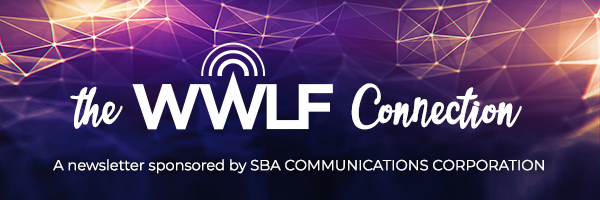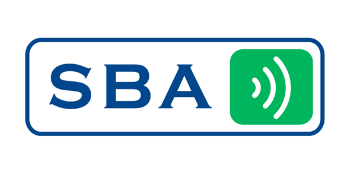More than half (57%) of working parents report feeling unsupported by their employers as they grapple with childcare issues.
This number comes from a survey of working parents by Maven Clinic. Maven is a leading women’s and family healthcare company. They partner with employers to improve maternal outcomes, lower costs, and attract and retain more parents in the workforce.
Yet, companies are trying.
“I’ve spoken with a number of companies. Everyone is looking for the best practices and trying to figure out how to make them work,” says Sara Daly-Padron, a Maven career coach, adjunct professor at Columbia University, and the Founder-Principal of SDP Advisors. She helps companies and individuals define development goals, move plans into action, and achieve success.
So why is there a disconnect?
Reestablishing the connection
“There’s no silver bullet answer that will help all families or all companies,” Daly-Padron explains. “Everyone has a distinct experience and may need different kinds of support.”
If you as a company don’t understand what your employees need, there could be a disconnect between what you’re doing and what employees are feeling. This is a problem; it can lead to employees who feel quitting is their only option.
“It’s expensive to lose an employee,” explains Daly-Padron. “You lose intellectual capital and you have to recruit and retrain someone. And think about your morale. If a parent leaves because they don’t feel supported, what message does that send to the rest of the working parents?
“What I’m hearing is people feel overwhelmed trying to figure out how to access support. Or they don't feel like the support necessarily fits their situation,” she says. “Or worst of all, they’re afraid to use it.”
This last one is critical. With an unstable economy, some working parents hesitate to discuss their situations, frustrations, and feelings of overwhelm. Many parents fear the career implications if they take advantage of the policies designed to help them.
Luckily, companies can alleviate these concerns.
Promote policies across company culture
“The most important thing to do is strengthen the bond between your policies and their implementation,” explains Daly-Padron. “This bond should be visible throughout leadership. And it should be promoted.”
For example, your company might have a great workplace flexibility policy, but unless you understand who’s using it and how, you don’t really know if it’s permeating your culture. “If people feel guilty or that they’ll be penalized if they use the policies, then the policies aren’t working,” she adds.
Companies can use their HR teams to establish the policies and lean on leadership to establish the culture. Then they can train their managers. At the day-to-day level, it's managers who instill trust in the organization by having conversations, building plans, and moving forward.
Make policies easy to find and use
What do people need? Those with their time stretched thin and with responsibilities overwhelming them want services that are convenient, easy to access, and get them the help they need.
Digital platforms that get people this help, whether it’s lactation support for a new mom, coaching a parent through transitioning kids into kindergarten or into college, or mental health support, are a great way to support your employees. In fact, mental health appointments have increased 300% since March (and mental health support helps more than just parents).
Resources like EAPs or other digital platforms let employees reach the experts who can help them the most. But they have to be easy to find.
“If access to benefits is buried in a company handbook or intranet, employees stretched to their limit don’t have time to look for that,” Daly-Padron says.
She advises marketing your policies to employees and having managers promote these resources directly to their teams.
Ask for help
“Managers are overwhelmed, too. And now they’re adding in one-on-one check-ins about bandwidth and concerns,” says Daly-Padron.
“Yet it’s important for everyone to look at their priorities,” she adds. “We all need to understand how we can make things work for this relatively short time period in the span of a career or the life of an organization.”
Overwhelmed managers don’t have to go it alone. They can talk to their own leadership about how to handle this new situation.
“Not everybody will be able to hire deputies or assistants to help manage their teams. But managers and leaders can look at their structures to see how to adapt,” Daly-Padron says. “One option might be offering stretch assignments to some team members.”
Try reviewing your team’s commitments, your own managerial responsibilities, and each of your team member's development goals. Consider realigning responsibilities across the team. This can balance the work for those feeling overwhelmed while helping others grow and develop.
Watch out for benevolent discrimination (AKA: Don’t make assumptions)
Benevolent discrimination affects parents, particularly women. It happens when leaders and managers make assumptions that may not be accurate:
“She’s a new mom. She's never going to want that account that makes her travel once a quarter. Let’s give that to someone without a young child.”
“She’s nine months pregnant. Let’s take her off this big account because it will require some meetings when she's out.”
“She’s got elementary-aged kids and schools are all virtual. We won’t give her this high-visibility assignment.”
Managers should remember not every parent—and especially not every working mom—is overstretched. Some might have a nanny, a grandparent helping out, a spouse who handles childcare, or older kids who are more independent.
“If managers think, ‘I better just lay off on all of my parents and give the key projects to people who don't have those responsibilities’, they’re engaging in a form of bias,” Daly-Padron explains. “And the fact is, not all parents are struggling right now.
“It’s far better to have conversations instead,” she advises. “Find out what’s really on someone’s mind before making decisions on assignments.”
Keep expectations clear
When an employee does take advantage of a policy, managers should have an upfront conversation about what success looks like. “It’s so important for employees and managers to be clear about the criteria to measure success within the accommodation,” explains Daly-Padron.
For people able to do their job, just in alternative hours, what defines success for them might remain the same. But for people taking larger blocks of time off or reducing some of their schedule, you must have a more nuanced conversation around what success looks like, given the reduced workload or hours.
“It will be different for every organization,” says Daly-Padron. “For some, it’s sales quotas; for some it's project based. In some cases, you may need to dial back any hard and fast numbers somebody normally has to make.”
For the employee…what if my company hasn’t done any of this yet?
“When I talk with women who are overwhelmed and under extreme pressure, feeling like they need to quit, I remind them that in a span of a 30+ year career, this is going to be a blip,” explains Daly-Padron. “But how you react in this blip and how you work with your manager matters.”
If you take extra time or reduce your goals for the time period, there’s a chance it might affect you for a little while. But unless you open up that dialogue and make it very clear what you can and can't accomplish and what success looks like right now, then it will definitely affect you.
Daly-Padron concludes, “It’s critical that you and your manager understand and agree on the outcome of your decisions.”
For more insights from Daly-Padron specifically for managers of new parents, read her newest article at Columbia University, "Supporting New Parents Returning to Work in the COVID-19 Environment" and follow her and Maven Clinic on LinkedIn.


